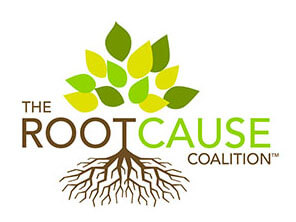Americans Recognize the Connection Between Home and Health
Americans Recognize the Connection Between Home and Health
Despite a Majority Recognizing the Impact of a Home on One’s Health, One in Three Say They Never Think About It
Despite a Majority Recognizing the Impact of a Home on One’s Health, One in Three Say They Never Think About It
(Washington D.C.) — Released today, a survey conducted by The Root Cause Coalition, in collaboration with the Hayward Institute, underscores a significant need for both education and resources regarding healthy home environments. While seven in 10 believe their health can be affected by their home, individuals’ knowledge as to how is limited. While more than eight in 10 believe that lead in water has at least some impact, over one-third report that cooking with gas has no impact. The quality of home construction and weather conditions are also believed to have no impact by roughly one in five individuals surveyed.
“The survey underscores the need for additional and ongoing education on how our home environment impacts health and well-being,” says Barbara Petee, President of the Coalition. “While we are increasingly and appropriately focused on the environment, including carbon emissions, clean water, lead and other critical factors, this study shows the importance using trusted and reliable sources to underscore this connection and how to address it.”
And despite a widely held belief that one’s health can be affected by their home, more than one-third say they never think about it. Those who are under 45 years of age, higher income earners, parents, college-educated and living in urban areas are all more likely to think about it often. Those who are over 65 years old and non-parents are significantly more likely to not think about it at all. Importantly, there is also a significant portion of the population not taking action to influence the health of their home environment – 22% say they can but aren’t, while another 15% say they want to but don’t believe they can; lower income earners are significantly more likely to report this (23%). And the majority (57%) report cost as the barrier to influencing the health of their home environment.
Gathering information about healthy home environments, including from trusted sources, is believed to be fairly accessible; more than eight in 10 feel at least somewhat comfortable they could access this information. Trusted sources vary widely, however, with friends and family and healthcare providers being among the most trusted with government agencies and utility companies not far behind. Unsurprisingly, among the least trusted source is social media. Other sources with lower levels of trust, like churches, may be because these sources don’t tend to distribute information on these topics.
Last, it appears as though other individuals in a home have a significant impact on the choices one makes about the health of their home with three-quarters reporting that they have at least some impact.
"The science around environmental exposures in our homes and their health effects is robust, as is the body of knowledge about mitigation measures. What stands between us and healthy home environments are all the actionable implementation steps that are predicated on education, activation, and resource allocation,” noted Julie Bradley, Executive Director of the Hayward Institute. “The data from this survey give us a snapshot of how people are thinking about these issues and help us strategically collaborate to educate and advocate."
Methodology
1,000 interviews among adults age 18+ were conducted from June 3-7, 2022 using an online survey. The results were weighted to ensure proportional responses. The Bayesian confidence interval for 1,000 interviews is 3.5, which is roughly equivalent to a margin of error of ±3.1 at the 95% confidence level. The Root Cause Coalition Co-founded by AARP Foundation and ProMedica in 2015, The Root Cause Coalition is a non-profit member-driven organization comprised of more than 90 leading health systems, hospital associations, foundations, businesses, national and community nonprofits, health insurers, academic institutions, local governments, and policy centers. Our common goal is to achieve health equity for every American.
Please click here to view the full report.
